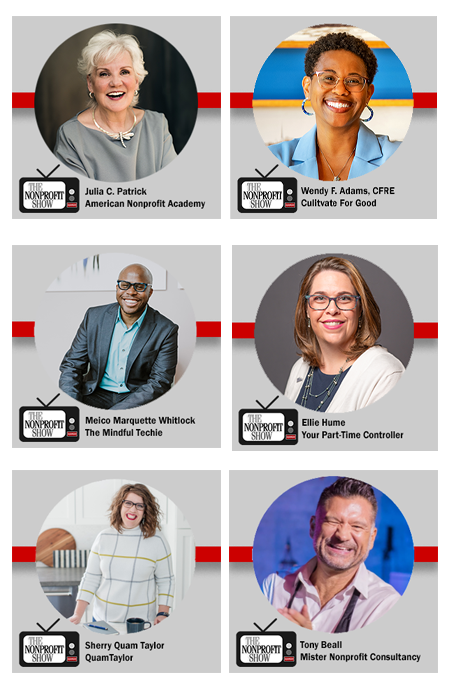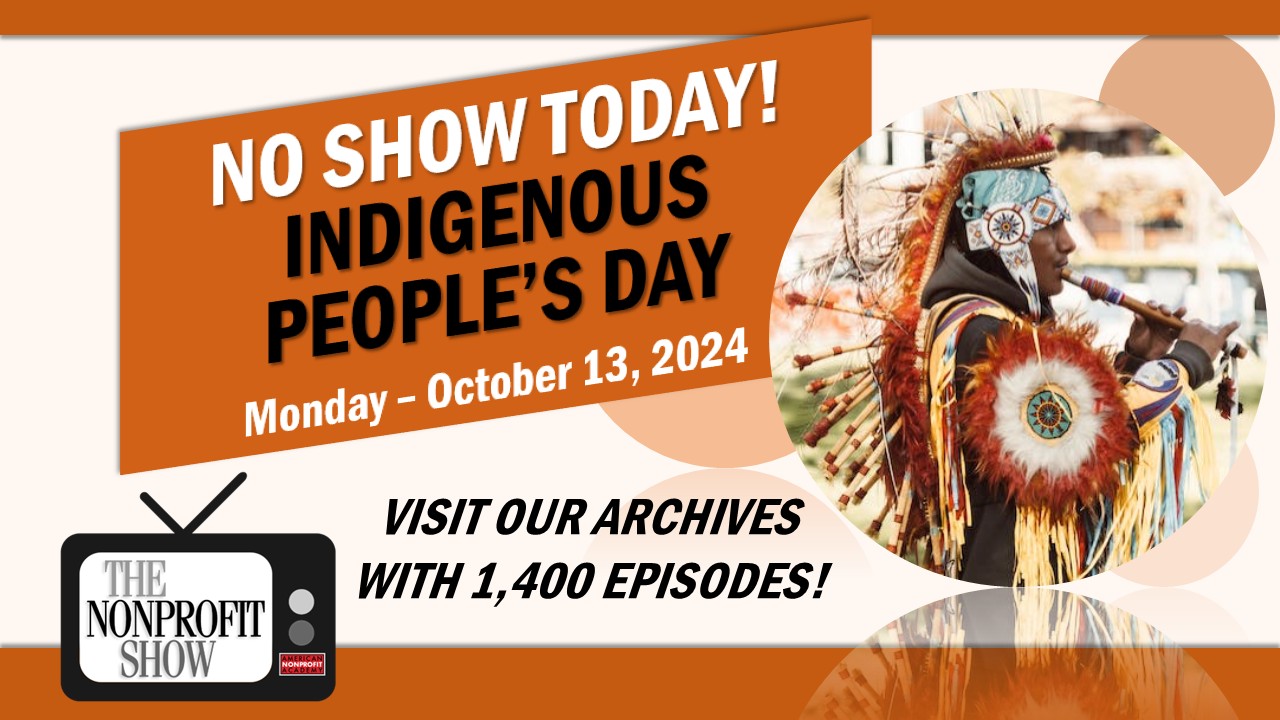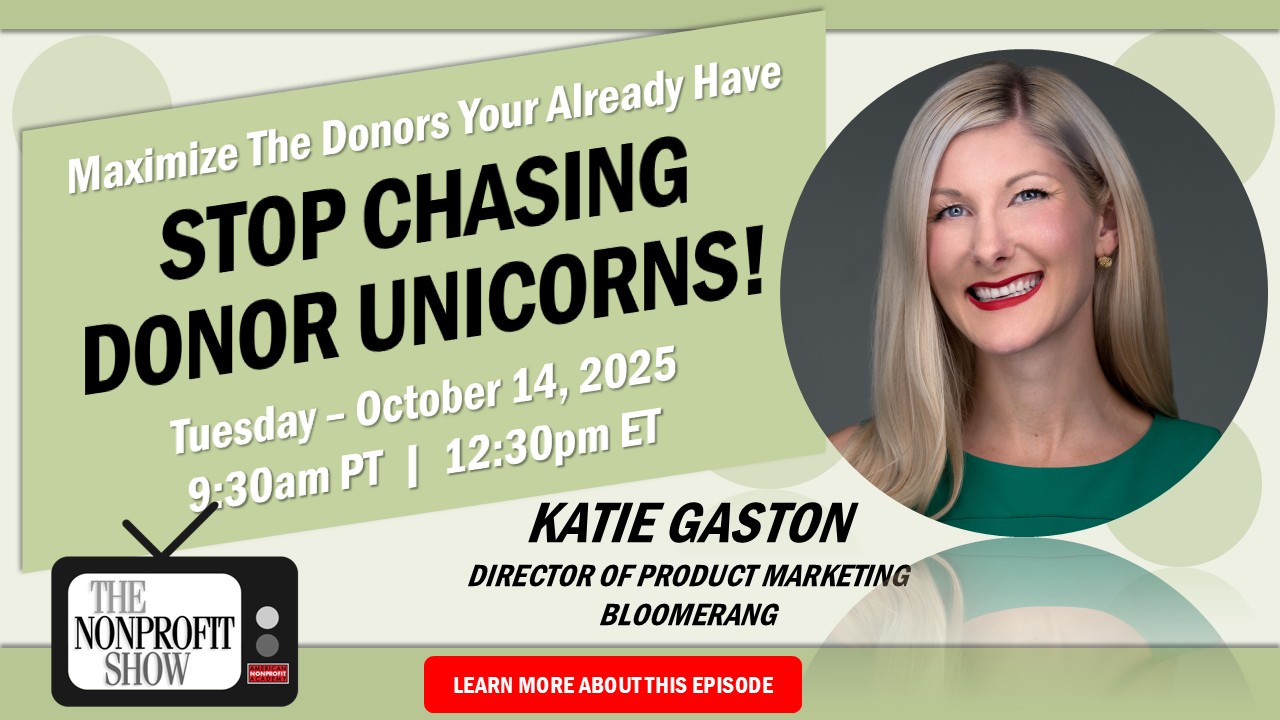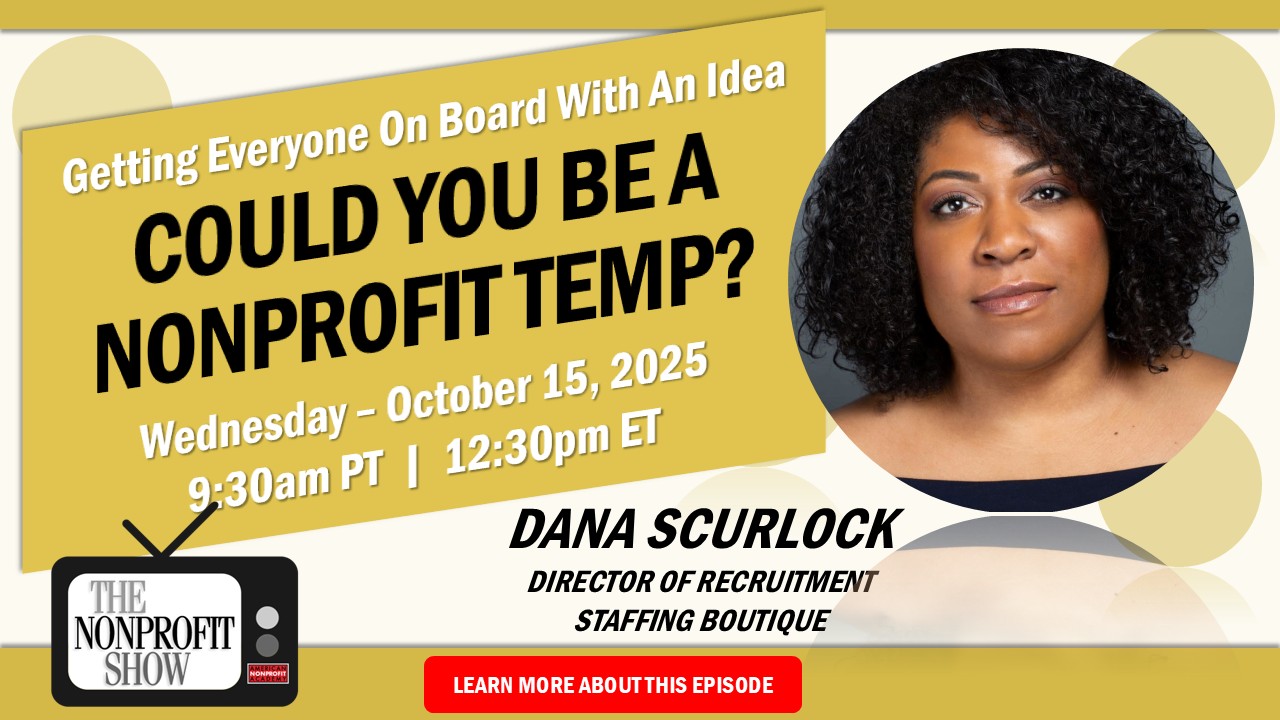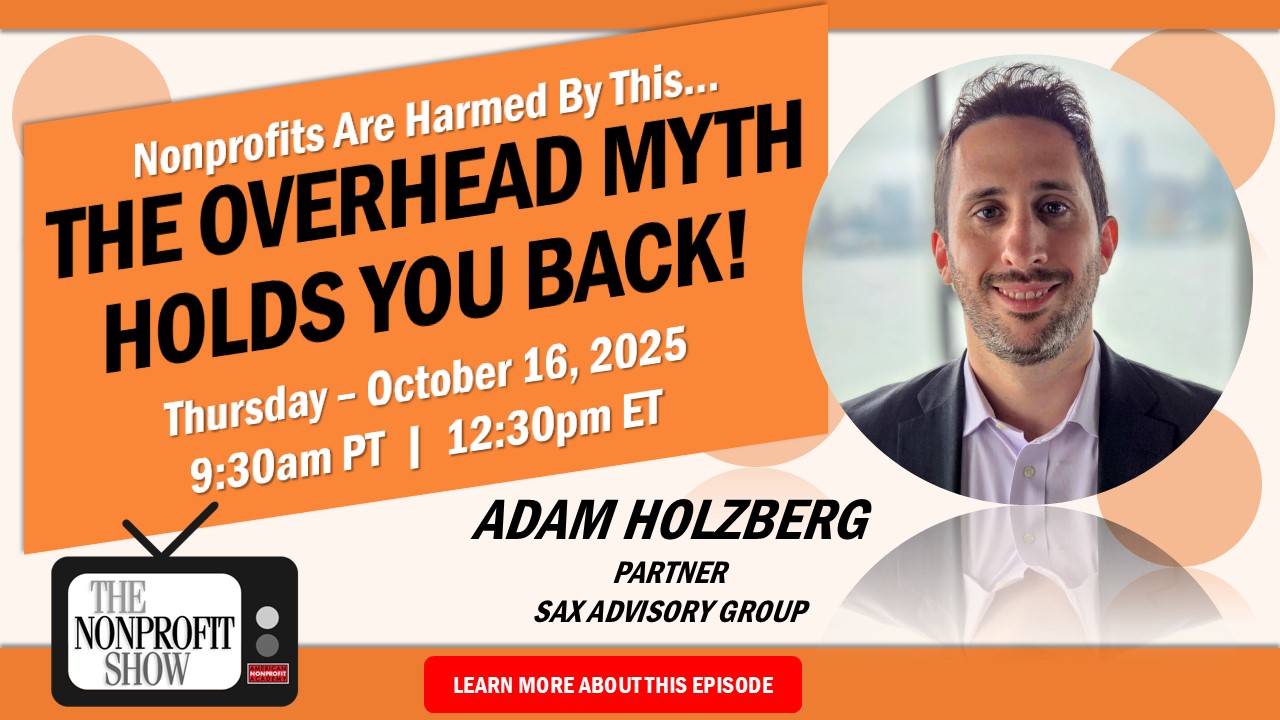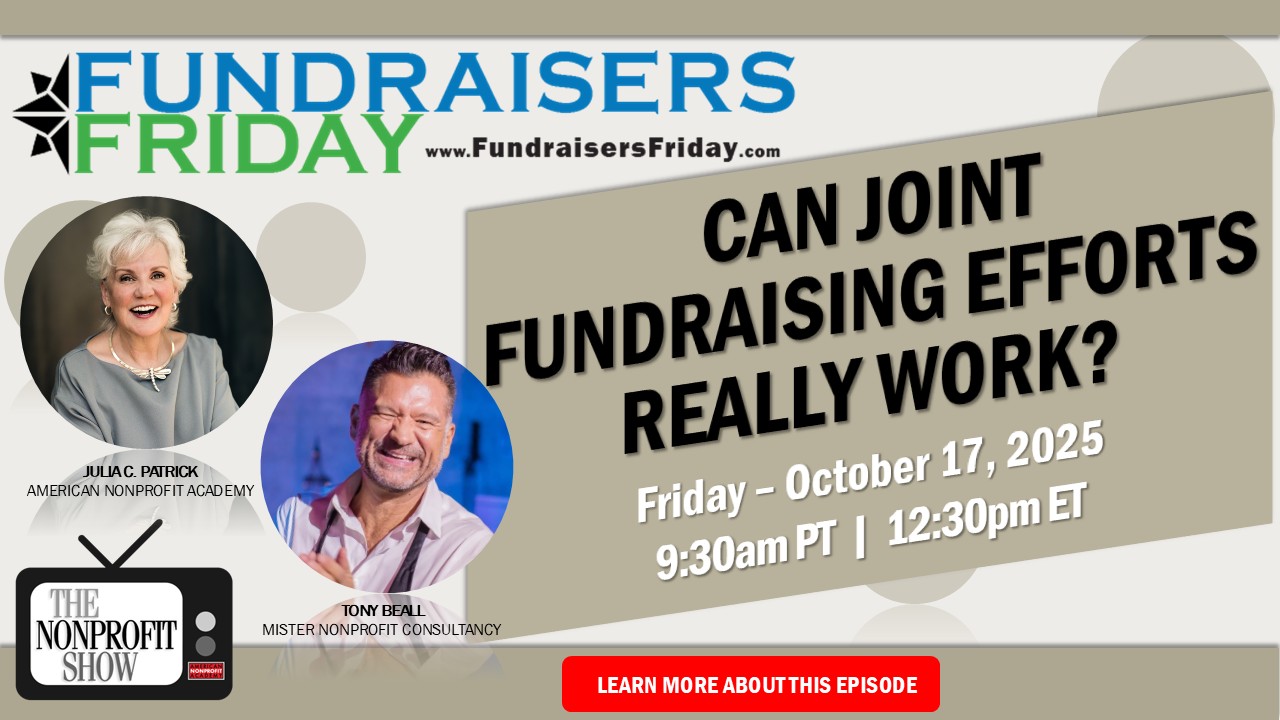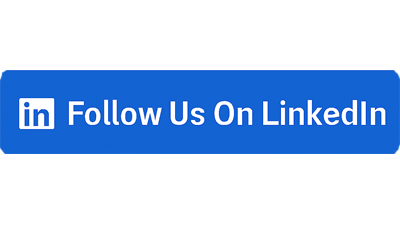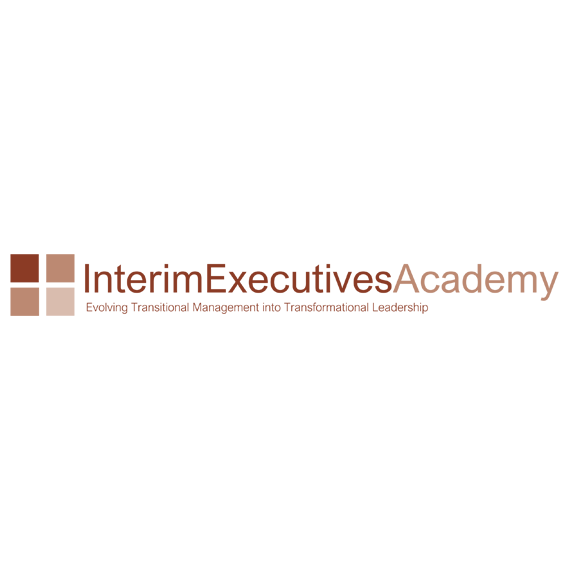
The Nonprofit Show is the daily live video broadcast where our national nonprofit community comes together for problem solving, innovation and reflection. Each day the Co-hosts and our guests cover the latest topics with fresh thinking to help you and your nonprofit amplify your social impact and achieve your mission, vision and values.
Join our Guests and Co-hosts–and Be Inspired!
Live! Monday thru Friday
Sign-up for Show Reminders!
Meet Our Co-hosts!
Made Possible By Our Generous Education Partners Who Support And Believe In The Work You Do
OUR LEARNING LIBRARY WITH MORE THAN 1,000 EPISODES!
MEET SOME OF OUR FEATURED GUESTS AND EXPERTS
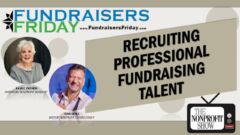
Julia C. Patrick and Tony Beall get practical about recruiting fundraising talent when Q4 urgency is peaking. They open with empathy for development teams sprinting toward holiday giving, then move straight into the realities leaders must manage: retention, clarity, and smarter channels for sourcing candidates. Tony reminds us of the data behind turnover—average tenure around 19 months—and turns that into a charge for boards and executives to assess culture and expectations, not just replace people. “I’m an advocate of putting salary ranges in job postings,” he says, framing transparency as both respectful and time-saving for everyone.
The core lesson: start with a carefully crafted role. Compensation, deliverables, and core competencies belong upfront so you can source with precision. Julia pushes the conversation further: what if someone has been in the role for ten years? Tony offers a balanced lens—deep relationships can be a huge asset provided the organization’s future vision and the person’s strengths still connect.
From there, they map pathways to strong candidates: specialized job boards (AFP global and chapter sites, Chronicle of Philanthropy, local consulting firms’ boards), professional networks, and the university pipeline. Today’s philanthropic studies programs and micro-credentials (including LinkedIn Learning) expand opportunities for both organizations and professionals; mid-career learners with real-world experience can be exceptional hires. Julia points to the Lodestar Center at ASU as an example of a robust regional hub producing talent across ages and backgrounds.
They also cover the human side: discretion on LinkedIn (quietly indicating recruiter-friendly status), partnering with search firms, and managing communications in small communities where reputations travel fast. Tony’s encouragement is simple and memorable: “You have to be in it to win it.” That means showing up, telling trusted peers you’re exploring options, and being thoughtful about where and how you share.
The episode closes with practical optimism. Recruiting well isn’t about luck—it’s about clarity, channels, and consistent relationship-building. Name the role. State the range. Know the competencies. Post where fundraisers actually look. Tap universities and certificates. And keep your personal brand healthy—because your next opportunity often starts with the conversations you have today!
#TheNonprofitShow #FundraisersFriday #NonprofitCareers
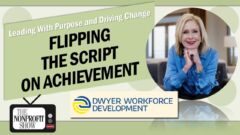
Dwyer Workforce Development is rewriting what “possible” looks like for a young, fast-scaling nonprofit. In this compelling conversation, CEO Barb Clapp traces a journey that began with a blank slate in September 2022 and now stands at 10,000 Dwyer Scholars across seven states—with a confident path to 100,000 by 2030. The spark came from founder Jack Dwyer’s twin commitments: expand opportunity for people shut out of stable careers and respond to the nationwide healthcare staffing crisis. Barb’s charge was bold—design a national model that moves quickly, performs consistently, and proves its value to partners, employers, and learners.
Her answer blends entrepreneurial rigor with social mission. Dwyer built a social enterprise engine—a $590 million conversion of a skilled nursing portfolio to nonprofit ownership—whose proceeds help fund training pathways. At ground level, the organization relies on clearly defined referral, training, and employer partnerships, each governed by MOUs and measurable expectations. That clarity enables adaptation to rural, suburban, and urban markets while maintaining one brand, one message, and one standard for outcomes. As Barb puts it, “My little motto is that press brings opportunity and having a consistent brand and understanding consistent messaging will improve outcomes.”
Communications discipline is not a tactic; it is strategy. Internal messaging aligns every team member on values, goals, and voice. External messaging earns trust, investment, and momentum. Boards and leaders who resist marketing spend, Barb notes, miss the compounding returns of consistent communication. The results are striking: rapid state expansion, strong completion and placement outcomes for scholars, and a repeatable market entry framework. States now approach Dwyer—Kansas and New York among them—because the model is explicit, execution-ready, and partnered from day one.
Barb’s leadership philosophy centers on kindness through candor. “Clarity is kindness… I’m like a street shooter, so no one really doesn’t understand what my expectations are.” That stance dignifies partners and scholars alike, and it fuels the organization’s capacity to scale technology, staff, and regional structures without losing its heart. The pandemic exposed both the fragility and heroism of healthcare work; Dwyer’s model honors that reality by opening doors to CNAs and other caregiving roles for individuals overcoming homelessness, domestic violence, and generational limits.
The takeaway is simple and ambitious: when mission meets enterprise discipline and brand coherence, systems begin to shift. Dwyer Workforce Development is proving that national growth and local responsiveness can move together—one clear message, one rigorous playbook, and thousands of new careers at a time.
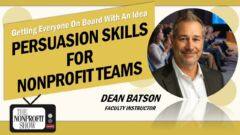
Nonprofits don’t just need more messages—they need messages that move people. In this fast-paced episode we welcome persuasion instructor and longtime marketer Dean Batson to show how science-based communication turns attention into action. Batson traces his path from launching a digital agency to teaching persuasion at Arizona State University, where he studies the shortcuts our brains use to decide fast. “We make mental shortcuts all day long,” Dean explains. “If you know which way someone may lean because of a heuristic, you can frame your message to nudge that choice.”
He breaks down social proof (those 5,000 five-star reviews that quietly sway your click), the danger of choice overload (the famous jam study where 24 flavors crushed sales), and the “availability heuristic”—why the word “shark” grabs attention while “falling coconuts” doesn’t. Dean’s advice: be the message people recall first. “Be the shark messaging, not the coconut messaging.”
For fundraisers, this means streamlining every pathway from interest to gift. Keep donors in System One (fast, intuitive) rather than forcing System Two (slow, effortful) that stalls giving. Less friction. Fewer steps. Clear next action. Dean contrasts persuasion and manipulation with a simple rule: persuasion is transparent and win-win; manipulation is opaque and win-lose—and it burns trust.
He also flips how teams read results. Many obsess over the 7% who opened an email while ignoring the 93% who didn’t—classic survivorship bias. The fix: study the non-responders and reframe your outreach so more people move. Dean offers practical tactics you can use today, like priming stakeholders with a short Slack note before a meeting to set the idea as the front-runner. And don’t wait: start shaping next week’s “yes” with simple, steady cues today.
Finally, Dean urges leaders to equip the entire organization—not just gift officers—with persuasion skills. When every staffer can frame ideas clearly, your mission becomes the message people remember, share, and support.
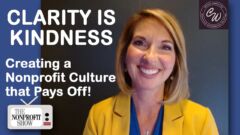
ROI and culture rarely share the same sentence in nonprofit circles—yet that’s exactly the connection guest Carrie Wright (Wright Consulting) makes with co-hosts Wendy F. Adams and Julia C. Patrick. Carrie argues that retention, performance, and donor experience begin inside the walls: “You will never serve your clients beyond the level of which you serve one another.” If teams are burned out, poorly onboarded, or siloed, no amount of recruiting spend fixes the churn. As she puts it, leaders must “close the back door” with rigorous assessment, honest listening, and visible action.
Carrie’s playbook is practical. Start with anonymous pulse checks—quarterly if possible—to hear reality, not assumptions. Then act: cross-functional small groups, bridge-building across departments, and norms that reward collaboration instead of comparison. Culture work isn’t a memo; it’s a habit system. Think heat rising to a boil: one degree at a time until 212.
What about power dynamics? Carrie is clear that modeling starts at the top. Wall values must match hallway behavior. If leadership resists inside-out work but pushes customer-facing service, there’s a mismatch. That’s where courage comes in—for executives and for team members who “lead from where they sit.” Emerging leaders can shape tomorrow’s norms today through reverse mentoring, curiosity, and steady ownership.
Timelines matter. Culture change isn’t instant. Carrie has seen meaningful movement in six to nine months when leaders commit, communicate, and keep at it—while accepting pruning along the way. People will self-select out; that’s part of creating healthy soil. The gardener’s mindset applies: tend, water, weed, and measure growth.
Above all, the path forward is transparent: “Clarity is kindness.” Name the direction, keep conversations open, and invite people into the process—including the moments that are tough. Put culture on the same planning calendar as fundraising and events. If you’re asking donors to invest, demonstrate that you’re investing in your people with equal focus. The outcome? A mission that gains momentum because the team carrying it is strong, trusted, and aligned.

When a nonprofit founder steps away, the organization often faces one of the most emotional and uncertain chapters in its history. In this episode, Joan Brown, Chief Operating Officer at Interim Executives Academy, and Catherine Bradshaw, Senior Search Specialist at EOS Transition Partners, discuss the delicate art of following a founder and building stability during leadership succession.
Catherine begins, “When a founder leaves, the organization loses not only a leader but often its very identity. The board and staff must learn that the mission can thrive beyond the individual.” Her experience reveals that many boards have never navigated a leadership change — especially one that involves the founder who is the face of the organization.
Joan adds, “Interim leaders give organizations breathing space. When there’s no heir apparent, an interim provides structure, clarity, and a safe period to determine what the future needs to look like.” She reminds us that interim executives aren’t caretakers—they’re catalysts for readiness, shaping communication and confidence at every level of the organization.
Together, they address the emotional realities that come when a founder steps aside: staff anxiety, donor unease, and the founder’s own sense of identity loss. Catherine recommends coaching and structured off-boarding as essential supports: “Departing leaders need grace and guidance too. It’s about leaving the organization strong and knowing when to step fully away.”
Joan highlights the power of communication: “No one functions well with prolonged uncertainty. Clear communication with staff, donors, and community partners makes all the difference in a smooth transition.” Both guests advocate early succession planning and the importance of professional interim leadership to prevent crisis-driven change.
From retaining donor trust to defining new leadership roles, this sparkling conversation reveals why founder transitions, when managed thoughtfully, can be a time of renewal rather than instability. It’s a masterclass for nonprofit boards, executives, and founders who want to lead with foresight rather than fear.
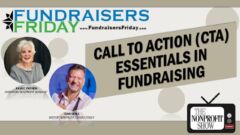
If you want donors to move, tell them exactly where to go. In this Fundraisers Friday conversation, Julia C. Patrick and Tony Beall turn vague appeals into precise, energizing calls to action (CTA’s)—across giving, events, engagement, volunteering, and advocacy. Tony lays the foundation early: “Start with the call to action. What do I want folks to do?” When you begin with the outcome, every sentence supports momentum, not meandering.
Julia puts a common myth on the table: “It’s not just like go out and ask a bunch of rich people for money.” Fundraising isn’t speed-dial; it’s relationship-building, timing, and clarity. Tony reinforces the point: “Fundraising is all about relationships,” and your CTA is the moment you convert relationship energy into tangible next steps—give, register, share, join, or contact.
Time-bound CTAs matter. Use real clocks, not artificial pressure. Matching gifts? Set the deadline: “Donate by October 15 so your gift will be doubled.” Community emergencies? Be specific: protect 20 roofs, feed families during power loss, or restore safe access to services this week. Impact framing turns abstract dollars into visible outcomes: $50 feeds one student for a month—$100 feeds two. That clarity invites bigger gifts because supporters can instantly see scale.
Equally important: truth and fit. If the amount and impact don’t match, supporters feel it. Build your figures from real program data, and keep the language human. Julia adds a practical lens for events: swap “RSVP” for action-forward phrases like “Save my seat.” Tap joyful FOMO without panic. Want engagement? Ask for it. “Click subscribe,” “Invite 10 friends,” “Share with a neighbor adopting a pet.” Want volunteers or in-kind items? Say exactly how to respond and how you’ll make it easy.
Advocacy belongs in your CTA toolkit too. This isn’t about politics—it’s about mission. Invite your community to “Stand with families—email your legislator today to support…” Frame the request around the people you serve and the outcome your programs create.
Finally, close the loop with gratitude-based storytelling. Julia’s favorite “Because of you” CTA wraps action and appreciation into one cadence: Because of you, 50 students received laptops; because of you, seniors got meals during outages. That framing reminds supporters they are the hero—today and tomorrow.
Start with the action you need, frame it with authentic impact, and invite your community to step forward—now.
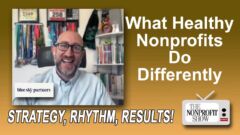
Matt Glazer arrives with runner’s grit and a teacher’s patience, asking nonprofit leaders to reconsider what “success” really means when the pace gets punishing and the stakes feel permanent. Blue Sky Partners, he explains, is built on human-centered design—strategy that starts with people, not paperwork—because “things happen with people, not to them.” That simple reframing lands like fresh air in a room that’s been working on fumes.
Matt traces the practical path from North Star to next step. Vision and mission still matter; values still guide. But unless the destination is explicit, inertia becomes the manager. He’s seen organizations celebrate the wrong finish line—an amount raised rather than a result achieved—because the compass got swapped for a calculator. As he puts it plainly, too many teams make “the destination the money, not the mission,” and then feel failure in victory. His remedy: clarity that sequences choices—staffing, board composition, fundraising tactics—toward outcomes that last longer than a news cycle or a fiscal quarter.
The episode turns intimate as he describes leading through funding freezes and furloughs, where procurement bottlenecks stall workforce programs and rapid-rehousing efforts. Chaos, he says, is part of the system; the question is how leaders respond. That response writes the culture: junior staff learn what urgency means, what boundaries are allowed, and whether development is an investment or an afterthought.
Matt’s answer is rhythm. He prefers “work-life rhythm” to balance, because real life surges and ebbs. Micro-rituals—a brain break after deep work, a morning run, hand-ground coffee, ten minutes of reading—become the scaffolding of steadiness. Leaders who model the pause (even leaving early after a 3 a.m. crisis) give permission for healthier habits and better listening. From there, skills compound: interns become staffers, staffers rise to managers, managers to directors, directors to chiefs.
He doesn’t preach from a distance. Matt shares his own burnout and mental-health journey, the season when achievement eclipsed wellbeing. That candor reframes self-care as operational sense, not personal luxury. The nonprofit sector is vast—and fragile—precisely because it relies on people whose calling meets constraints. Protect the people, he argues, and you protect the mission.
This episode is an invitation to re-set: name the North Star, measure what matters, and let rhythm replace adrenaline. Strategy becomes humane. Operations become sustainable. And the work—housed within leaders who can breathe—can keep going for a long time.
#TheNonprofitShow #NonprofitLeadership #HumanCenteredDesign
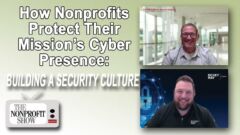
Cybersecurity isn’t just firewalls and tech jargon—it’s people, habits, and everyday choices. Kicking off National Cybersecurity Awareness Month, we bring together two voices who live this every day: Michael Nouguier, Partner, Cybersecurity Services at Richey May, and Tony Rehmer, Senior VP of IT at Children’s Miracle Network Hospitals (CMN Hospitals). Their message is clear: strong security starts with culture.
Tony sets the tone early: “We take a major part, but it is everyone.” In other words, security isn’t a back-office task—it’s a shared responsibility. With hospitals, HIPAA, and multi-state operations in the mix, CMN Hospitals treats staff as the front line. That means training that actually sticks: shorter, “microlearning” nudges delivered through internal channels, real examples, and peer-to-peer conversations. As Tony puts it, “We never, ever shame a person.” Instead, they use supportive coaching after incidents to encourage fast reporting and continuous learning.
Michael maps the big picture. Attacks have matured, and wishful thinking won’t cut it. “Hope has then become a liability when it’s your only defense.” The antidote? Make security part of the mission—top-down and day-to-day. That looks like updating mission statements (“do the work securely”), enabling multifactor for everyone (leaders included), and building a culture where staff quickly raise their hand when something feels off. He provides memorable visual: “Everybody needs a pitchfork… so they can do what they need to do to protect your organization.”
The conversation gets real with a story from CMN Hospitals at the start of COVID-19. Threat actors bought credentials on the dark web, slipped into a mailbox, swapped a message body for malware, and re-sent it. Because staff had been invited into the security effort, the team was alerted within five minutes. That fast reporting changed the outcome. Culture wasn’t a slogan; it was the safety net.
Both guests agree: this is ongoing work. Threats keep shifting—from credit cards to ransomware and data theft—so messaging, training, and audience targeting must evolve too. Practically, that means appointing security champions, aligning IT with communications pros who can translate across departments, and weaving security into leadership conversations and board funding decisions.
Takeaways you can use: treat people as partners, keep learning in snackable moments, celebrate fast reporting, and put “securely” in your strategy—not just in your tech stack.

Boards don’t magically run themselves—and this lively discussion proves it. Strategist and facilitator Mary Kay Delvo of Inspiring Sight lays out a practical path for turning board service from a vague obligation into purposeful leadership. She starts with a truth we all feel: “If they knew better, they’d do better.” Most board members were never taught governance, so we must teach it—and then expect ownership.
Mary Kay reframes board work with a memorable mantra: protect and direct. Every decision should answer, How does this protect the organization and or direct it? Pair that with her second keeper—“Noses in, fingers off”—and you’ve got a fast filter for staying strategic without micromanaging.
Her signature Seasonal Board Cycle makes governance easy to see and easy to use:
· Spring – Plant and cultivate: recruit intentionally for perspectives you truly need.
· Summer – Engage effectively: spread work through committees so knowledge isn’t concentrated.
· Fall – Revitalize and harvest: measure real impact, not just attendance.
· Winter – Recharge and look ahead: scan for change, refine strategies, and celebrate wins.
On strategy, Mary Kay replaces the dusty plan with a Strategic Map—a living journey to a destination. The destination stays constant; routes change as conditions change. That’s why boards must revisit the map, assess detours, and make smart adjustments with staff. After the board approves the map, staff craft an Understanding Impact Map with goals, success indicators, reviews, and board reporting—so every meeting tracks progress, learns from misses, and recommends course corrections.
She also addresses the classic tension between boards setting direction and staff living the day-to-day. Her non-negotiable: senior leadership joins the board in mapping, and staff input is synthesized and heard. Otherwise there’s no buy-in—and without buy-in, plans gather dust.
Most of all, Mary Kay gives boards permission to be human. Seasons change. Routes shift. Progress accelerates when everyone knows the role they play and the questions they must ask. Or in her words: “Boards need to be responsible for their own succession, uation, and foresight.” When that happens, governance becomes energizing—and impact becomes visible.
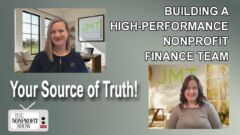
Nonprofits talk about programs, fundraising, and boards—but rarely about how to build and lead a modern finance team. JMT Consulting’s Taylor Bost and Samantha Tiso deliver a clear, practical playbook for turning finance from a back-office function into a strategic engine.
Samantha reframes the relationship right out of the gate: “We view the finance department as the customer support for the rest of the company.” That posture—service, responsiveness, and clarity—reduces fear, boosts collaboration, and speeds decisions. It also demands better systems. As she puts it, “With the right system… that is possible if you have it structured the right way.” Translation: good data in, fast insight out.
Taylor widens the lens to organization-wide alignment. Finance is not just P and L. It is grants, restrictions, repeat donor behavior, and cost to raise a dollar—metrics that reshape priorities across teams. That is why she pushes for a single ‘source of truth’ and warns against siloed tools: when data is scattered, people end up re-keying information and fixing errors. Her reminder lands: “Every time a human’s touching something… you’re opening yourself up to room for error.”
Measurement matters too—of the finance team itself. Taylor offers practical KPIs any CEO or board can use: monthly close time, volume of audit adjustments, and adoption of automation. If close cycles are drifting from 5–7 business days to 15–20, there is friction you can remove with better workflow, integrations, and roles.
Governance shows up repeatedly. Samantha adds: “The C-suite needs to be looking at it. The board needs to be looking at it.” Confidence in numbers is confidence in the organization. And with grantmakers demanding more frequent and better-substantiated reports, integrated systems are no longer optional—they are essential.
The quick-paced convo also tackles outsourced and remote finance. Success hinges on clear ownership of recurring tasks, documented deadlines, and transparent communication channels. Taylor’s advice: break the monthly engine into parts—reconciliations, payment application, approvals—so nothing stalls.
The icing on the cake? We get a preview of Innovate 2026 conference and JMT’s three-decade journey—from early outsourced accounting to full-stack finance technology and process advisory. Samantha shares how Innovate blends training with thought leadership on grants, banking, interest rates, and board communication, ensuring every role—from CFO to controller to ops—walks away with practical upgrades.
Big takeaway: modern nonprofit finance is a service mindset plus integrated tech plus shared accountability. Or in Taylor’s words, “CFOs step a little bit more into the tech strategy role.” When finance leads with service and systems, everyone rows in the same direction—and mission moves faster.

Financial leadership is more than numbers—it’s the heartbeat of nonprofit sustainability. In this Nonprofit Power Week finale of The Nonprofit Show, Regional Director Ellie Hume of Your Part-Time Controller (YPTC) brings clarity and candor to some of the most frequently asked financial questions. With an “Ask and Answer” format, the conversation covers everything from roles and responsibilities in financial leadership to the evolving landscape of fractional CFOs.
Ellie sets the stage by redefining how we see finance in nonprofits: “Finance is literally the thread that draws every piece of the organization together because without it, nothing works.” She dismantles silos by urging finance professionals to engage deeply with program, marketing, and development teams to ensure that data isn’t just accurate but also meaningful for decision-making.
The discussion takes a practical turn as Ellie differentiates between controllers, comptrollers, and CFOs. She outlines the transactional oversight of controllers, the governmental nuance of comptrollers, and the strategic future-focus of CFOs. She also digs into the importance of internal controls, noting their role in fraud prevention and audit readiness.
The lively session shifts into the governance space. How often should boards review and sign Conflict of Interest (COI) policies? Ellie’s answer is clear: annually at minimum, but immediately when new conflicts arise. She gives a relatable example: a contractor-board member bidding on a capital campaign project must disclose and recuse themselves. Transparency, she argues, isn’t optional—it’s fiduciary duty.
Ellie also challenges assumptions about credentials. Do finance directors need to be CPAs? Her answer: “You truly just need great accounting skills and a strategic mindset to help the organization use financial information to make good business decisions.” Certifications like CPA or CMA add credibility but don’t replace experience or practical skill.
The conversation also explores the rise of fractional leadership. Ellie frames fractional CFOs as an efficient way to access high-level talent at a fraction of the time or cost, particularly useful during transitions or to prepare for a new hire. Fractional arrangements, she explains, can be both short-term bridges and long-term partnerships.
The conversation wraps with a powerful reminder for board members: ask tough financial questions. Are resources aligned with mission? What risks are we facing? Do internal controls hold up? And crucially—what training do board members need to responsibly interpret financial statements?
#TheNonprofitShow #NonprofitFinance #FractionalCFO

In this Nonprofit Power Week conversation, we sit down with Jen Blasy, Manager at Your Part-Time Controller, to confront a topic many organizations would rather avoid: fraud in the nonprofit sector. Jen is unequivocal about the stakes: “Fraud has been a constant. It may look different, but it’s still happening.” She explains why the sector’s empathy, trust, and lean staffing models can unintentionally create exposure—especially in a remote and hybrid world where e-mail, text, and chat now mediate so many approvals and financial transactions.
Jen moves past labels to show how fraud actually occurs. She refreshes the classic “triangle” of pressure, rationalization, and opportunity by adding capability and personal ethics, then wraps it all in culture. Tone at the top matters, she notes, because expectations, zero tolerance, and open conversation are often the only real deterrents. “We need to normalize the discussion of it so that it becomes more normal to talk about,” Jen adds, urging leaders to speak plainly with staff, boards, auditors, and yes—donors—about risks and responsibilities.
Concrete scenarios make the message land. From stolen cards being “tested” on donation pages to refund requests designed to route money out through alternate channels, Jen shows how seemingly donor-friendly instincts can be weaponized. She pushes organizations to map their most common money-in and money-out pathways, document updated controls that fit remote workflows, and rehearse a response plan before a crisis. Who do you call first? Legal counsel, your insurer, your auditor, a board champion? Decide now, not mid-incident.
The throughline is sector solidarity. Because incidents are underreported and under-prosecuted, offenders can quietly move from one organization to another. Jen challenges leaders to think beyond their own walls and treat transparency as community protection. Make fraud risk a standing board agenda item, ensure auditors’ annual fraud conversations are substantive, and appoint an internal champion to coordinate policies, training, and continuous improvement.
Fraud will not be eliminated, but its impact can be contained by stronger culture, modernized controls, and candid conversation. This episode equips executives, finance teams, and fundraisers alike to recognize where they’re vulnerable and to act. As Jen frames it, progress starts when we stop whispering about fraud and start planning together.
#TheNonprofitShow #NonprofitFinance #FraudPrevention
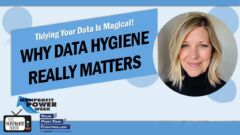
Nonprofits want the speed of automation and the promise of AI—but Alicia Eastvold, Department Leader for Client Technology Solutions at Your Part-Time Controller (YPTC), explains why many orgs stall at the starting line: messy, bloated, and fragmented data. Her central thesis is simple and powerful: “We can’t speed things up if it’s not organized, and we can’t write simple rules around it for where it belongs.” From the first minute, Alicia reframes “data hygiene” away from fear and toward usefulness—think Marie Kondo for systems: keep what serves the mission, archive the rest, and label everything so your “smart assistant” can actually find the hammer.
Alicia maps two common failure modes: too much information (endless, unreadable reports) and poor structure (the same concept scattered across donor CRM, accounting, and spreadsheets). Both grind automation to a halt and produce costly mistakes in grant allocations, budgets, and forecasts. Her practical fix: decide what you need going forward, set a cutoff, inactivate legacy categories, and build simple, durable rules that can run 1,000 times. As she puts it, “Think big about what would happen if I had to do this thing a thousand times and plan your process that way.”
A standout story: a client wanted a complex custom payroll allocation tool. After examining their cluttered chart and inconsistent rules, the team cleaned the system, documented clear rules, and discovered an off-the-shelf cost allocation tool that did the job at a fraction of the price. Takeaway: better structure often beats bespoke code.
The stakes are real. Misallocations can snowball into seven-figure problems, finger-pointing between development and finance, and restricted funds that can’t be used where they’re most needed. Clean, rule-based data unlocks credible budgeting, forecasting, and the ability to ask funders for the right dollars—including flexible, unrestricted support. It also fuels data storytelling that boosts trust and investment: when leaders visualize program costs, funding gaps, and outcomes with clarity, credibility skyrockets.
Bottom line: start today. Choose what matters for the next 12–24 months, archive the past, enforce naming and categorization rules, and think like an enterprise—no matter your size. Clean data returns time to your people, turns AI from buzz to utility, and powers decisions that move the mission!
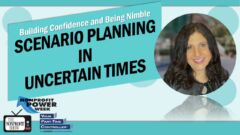
Scenario planning often sounds like a board retreat buzzword, but in this Nonprofit Power Week episode it becomes a practical playbook with receipts. Director Tesa Piccioni of Your Part-Time Controller (YPTC) reframes uncertainty as a routine operating condition, not a meteor strike. Her thesis is disarmingly simple: “Let’s take the un out of uncertainty and accept that certain things are going to happen. Let’s prepare.” Preparation, she argues, isn’t about predicting every storm—it’s about building a habit of visibility and fast pivots.
We start with the kitchen-table finance questions: What do you have? What do you owe? What’s promised in and promised out? From there, the “boring” stuff—clean records, timely allocations, grant restrictions, and a rolling forecast—becomes the organization’s superpower. As Tesa puts it, “If you have good information in, you get good information out—and that lets you act, not just react.” She expands the aperture beyond budgets: think balance sheet integrity, a just-in-case line of credit, and board fluency in financials so decisions don’t stall during turbulence.
The clever twist: scenarios aren’t just bad-news drills. Tesa insists on planning for lucky breaks too—unexpected windfalls, mergers, or a connector board member who opens doors. That $1.5M surprise check? Without a plan, it’s chaos with confetti. With a plan, it’s momentum.
Her practical framework pairs SWOT with three starter lenses: revenue up, revenue down, and environmental change. Master those, and you’re not memorizing scripts; you’re training reflexes. Equally important, it’s not a finance-only sport. Program leads, executives, and boards need shared situational awareness so services continue even if the lights don’t.
Tesa links this directly to strategy: strategic planning sets the destination; scenario planning keeps the route open when reality tosses detours. Review cadence? Not annually—responsively. The moment regulations shift, funds lag, or opportunities appear, open the playbook and adjust. That rhythm replaces anxiety with calm, which is precisely what constituents deserve.
The payoff is cultural: organizations stop operating in crisis posture and start operating with poise. Think FEMA’s checklists, but for food banks, youth programs, and arts orgs—quiet competence that protects the mission on ordinary Tuesdays and extraordinary Thursdays alike.
#TheNonprofitShow #ScenarioPlanning #NonprofitFinance
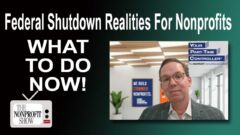
Derick Dreher of Your Part-Time Controller (YPTC) about what a federal budget stalemate really means for everyday nonprofit operations. Rather than getting lost in D.C. noise, Derick helps translate the process into plain decisions leaders can make right now. He distinguishes the big-picture spending framework from the agency-level appropriations that actually move money—and why, when competing continuing resolutions stall, operational pain shows up fast in grants, cash flow, and communications.
Derick is direct about timing and accountability. “Government shutdowns are very disruptive,” he notes, because grants staff are furloughed, portals can go dark, and payments pause. That doesn’t suspend your obligations: “If you have a report due date during the shutdown, you better send it in.” When systems are down, mailing with receipt becomes a practical move. He also cautions against attempting full drawdowns before costs are incurred; federal awards are reimbursement-based, and advances (if any) require clear permission and careful documentation.
The heart of the conversation is a workable to-do list. First, narrow your information sources: look to the National Council of Nonprofits, your state association, and trusted sector platforms rather than endless doom-scrolling. Second, contact program and fiscal officers now—before furloughs begin—to ask about extensions, submission methods, and any allowable advances. Third, communicate with stakeholders early so they don’t fill the silence with assumptions: explain what services could shift, what your contingency looks like, and how supporters can help.
On finance, Derick recommends tightening the cadence of cash views to weekly during uncertainty and building a scenario that assumes zero federal revenue for a period. That plan—reviewed with the board—becomes your “break glass” map if payments stall. Pair that with thoughtful revenue diversity (individuals, corporate, foundation, government) so a delay in one stream becomes a solvable liquidity challenge instead of an existential crisis.
Derick also flags a recent executive order on federal grantmaking that may slow timelines and alter risk: added political approvals, a preference for lower indirect rates, and a new termination clause could change how awards feel on the ground, at least temporarily. Agencies are emerging from a mandated pause, and budgets remain unsettled—so expect ambiguity, double down on documentation, and keep your communications clear and proactive.
The message is steady and usable: focus your inputs, talk to agencies now, model contingencies, and keep people in the loop. Preparedness here isn’t alarmist—it’s good stewardship under uncertainty.

